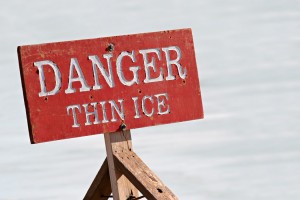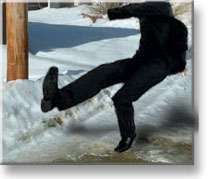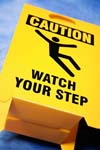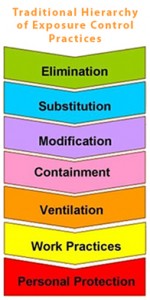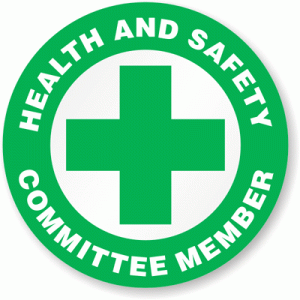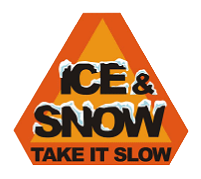 Driving in Snow and Ice
Driving in Snow and Ice
The best advice for driving in bad winter weather is not to drive at all, if you can avoid it.
Don’t go out until the snow plows and sanding trucks have had a chance to do their work, and allow yourself extra time to reach your destination.
If you must drive in snowy conditions, make sure your car is prepared, and that you know how to handle road conditions.
It’s helpful to practice winter driving techniques in a snowy, open parking lot, so you’re familiar with how your car handles. Consult your owner’s manual for tips specific to your vehicle.
Driving safely on icy roads
- Decrease your speed and leave yourself plenty of room to stop. You should allow at least three times more space than usual between you and the car in front of you.
- Brake gently to avoid skidding. If your wheels start to lock up, ease off the brake.
- Turn on your lights to increase your visibility to other motorists.
- Keep your lights and windshield clean.
- Use low gears to keep traction, especially on hills.
- Don’t use cruise control or overdrive on icy roads.
- Be especially careful on bridges, overpasses and infrequently traveled roads, which will freeze first. Even at temperatures above freezing, if the conditions are wet, you might encounter ice in shady areas or on exposed roadways like bridges.
- Don’t pass snow plows and sanding trucks. The drivers have limited visibility, and you’re likely to find the road in front of them worse than the road behind.
- Don’t assume your vehicle can handle all conditions. Even four-wheel and front-wheel drive vehicles can encounter trouble on winter roads.
via weather.com – Driving Safety Tips – Driving in Snow and Ice.
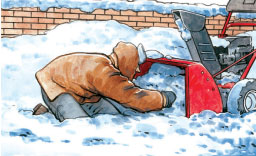 Snowblower injuries tend to happen when someone stops paying attention for even a few seconds.Even after the snowblower is turned off, tension is stored in the rotor blades. A hand or finger stuck in to remove wet snow or ice is at risk for being cut, mangled or even amputated.
Snowblower injuries tend to happen when someone stops paying attention for even a few seconds.Even after the snowblower is turned off, tension is stored in the rotor blades. A hand or finger stuck in to remove wet snow or ice is at risk for being cut, mangled or even amputated.
